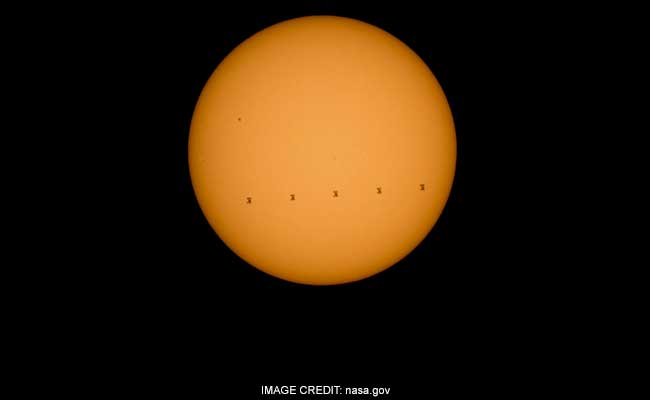
NASA Captures the Spectacular Image of ISS’s Solar Transit Moving at 28,968 Km/Hr
These days, International Space Station (ISS) is being visible from the earth and all most every space enthusiastic is busy in clicking the rare pictures of the stunning phenomenon. Recently, the biggest manmade space station made its way to the transit of the sun and the US-based space agency NASA has framed the breathtaking moments through its UHD cameras. On 17th December 2016, while ISS was just about to make a solar transit, one of lensman of NASA, clicked the extravagant imagery of the orbital post, which is first-of-its-kind.
At the moment, when the images were clicked, the International Space Station (ISS) was making its way to the Sun at an approximate speed of 28,968 kilometers per hour. The incredible pictures clicked by NASA are representing the rarest views of the space. During the moment when ISS cross the transit of Sun, NASA’s lensman Noel Kowsky managed to capture multiple pictures of the stunning happening and generated a single composite view of the ISS by combining 10 different pictures. Because of the high-definition cameras, the event of ISS transiting the Sun is clearly visible.
In the pictures, ISS is clearly notable while crossing the Sun and the views of the solar transit are truly exceptional. The eye-catching image is made from ten different snaps and is noticeably representing the International Space Station, with six onboard crews, in outline transiting the sun at around 30, 000 kilometers per hour. The pictures were clicked on Saturday, 17th December 2016, from Newbury Park, California.
As per the reports of the ‘Tech Times’, clicking the pictures of such a rare solar transit is not a small achievement as it takes a great amount of time and preparation. The ISS is currently the largest manmade space station which is owned and operated by NASA. The space lab is orbiting the Earth at an altitude of approximately 330 to 435 kilometers and hence to see the event without a high-powered telescope is quite impossible.


